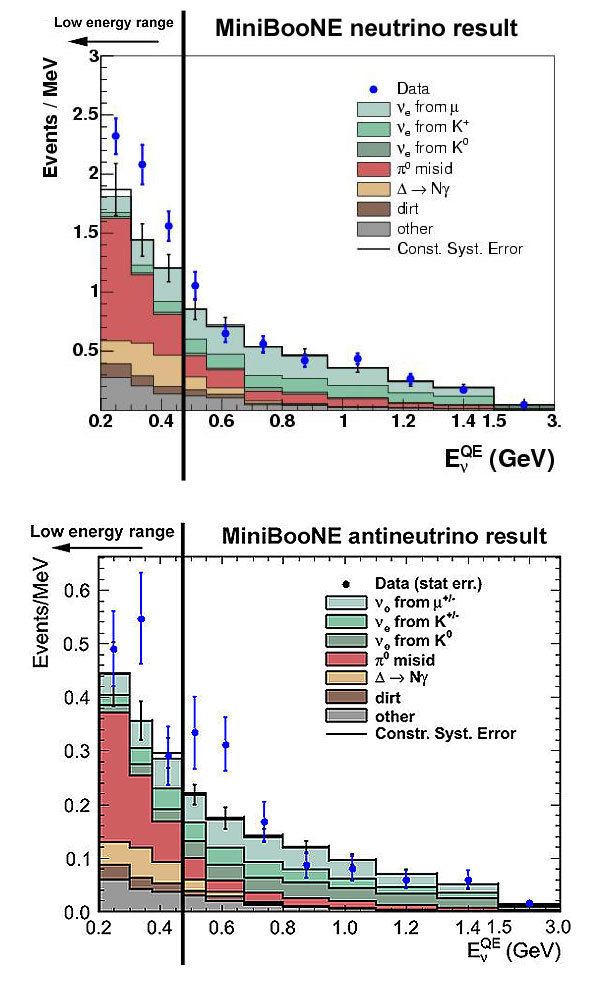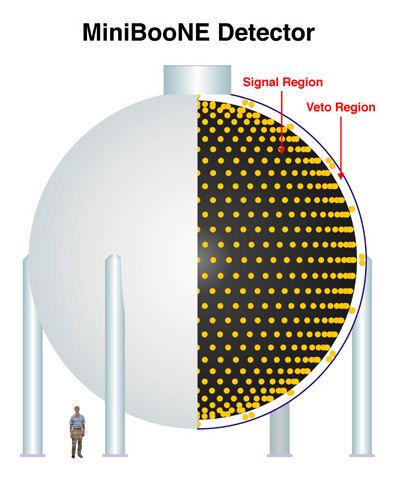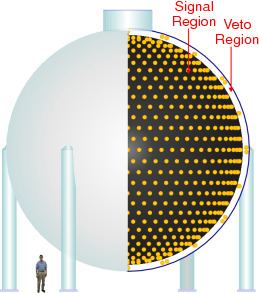 | ||
Miniboone i could i could
MiniBooNE is an experiment at Fermilab designed to observe neutrino oscillations (BooNE is an acronym for the Booster Neutrino Experiment). A neutrino beam consisting primarily of muon neutrinos is directed at a detector filled with 800 tons of mineral oil (ultrarefined methylene compounds) and lined with 1,280 photomultiplier tubes. An excess of electron neutrino events in the detector would support the neutrino oscillation interpretation of the LSND (Liquid Scintillator Neutrino Detector) result.
Contents

It started collecting data in 2002 and was still running in 2012.
Miniboone while u w8
History and motivation

Experimental observation of solar neutrinos and atmospheric neutrinos provided evidence for neutrino oscillations, implying that neutrinos have masses. Data from the LSND experiment at Los Alamos National Laboratory are controversial since they are not compatible with the oscillation parameters measured by other neutrino experiments in the framework of the Standard Model. Either there must be an extension to the Standard Model, or one of the experimental results must have a different explanation. Moreover, the KARMEN experiment in Karlsruhe examined a [low energy] region similar to the LSND experiment, but saw no indications of neutrino oscillations. This experiment was less sensitive than LSND, and both could be right.
Cosmological data can provide an indirect but rather model-dependent bound to the mass of sterile neutrinos, such as the ms < 6980416565886620000♠0.26 eV (6980704957654280000♠0.44 eV) at 95% (99.9%) confidence limit given by Dodelson et al.. However, cosmological data can be accommodated within models with different assumptions, such as that by Gelmini et al.
MiniBooNE was designed to unambiguously verify or refute the LSND controversial result in a controlled environment.


